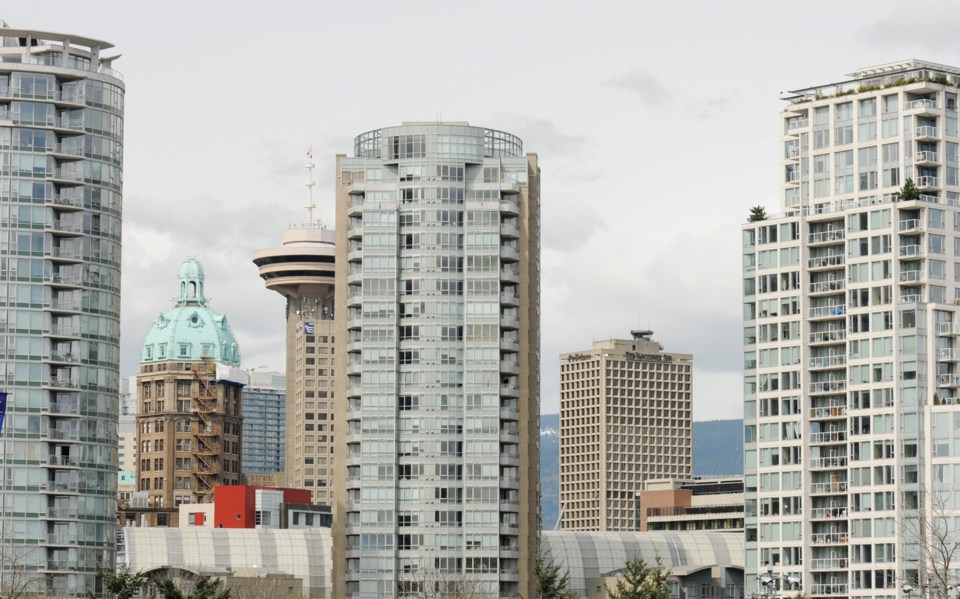Three recent scenes involving light and shadow from Vancouver.
The first scene: a luminous Sunday evening at the 38th Vancouver Folk Festival. The aptly named band Phosphorescent is dealing with feedback issues at the main stage, but it doesn’t seem to be hurting the crowd vibe. The western sky resembles a crushed set of pastels, with a crescent moon adding a stroke of white.
The second scene: I step from the Burrard SkyTrain Station late one afternoon to find a shadowy Gotham on Dunsmuir. Having somehow avoided this spot for years, I marvel how towers in the area have cut the sky down to a few slivers of light.
A visit to some places in the downtown core can feel like a walk through a Vegas casino floor: plenty of artificial light with no indication of the time of day. In contrast, the grassy amphitheater of Jericho Park, with its exposure to the sun, moon and (a few) stars, can give you a sense of riding spaceship Earth.
Third scene: some time ago I spoke with a “geospatial engineer” at a public hearing for a high-rise development in a Lower Mainland neighborhood. He tells me that at certain hours on sunny days, a proposed 22-storey highrise would result in a kilometre-long shadow across suburban homes to the east — but he’s not prepared to be interviewed about his findings.
It’s a touchy subject. Our Tulipmania real estate market is creating a Jack in the Beanstalk skyline, with pinnacles of light for the players and a canyon of shadows for everyone else.
Most home and condo owners don’t think a great deal about light — beyond exposure to the four cardinal directions — until they lose it to a nearby development. As noted in a Washington Post story about the gloomy consequences of high-rise construction in the U.S., “shadows even turn light into another medium of inequality — a resource that can be bought by the wealthy, eclipsed from the poor.”
Controversy over civic light and shadow has a long pedigree south of the border. Public outcry in 1915 over the seven-acre shadow created by the 42-storey equitable Building in Lower Manhattan influenced the architecture of subsequent developments in New York. Skyscrapers such as the Empire State Building and Chrysler building were conceived with tapered designs; setbacks at higher floors that allow more sky to be seen from the ground.
This contextual approach went sideways for a stretch. The modernist credo, expressed in Le Corbusier’s description of a house as a “machine for living,” led to writer P.J. O’Rourke’s ’90s-era estimate of rectilinear additions to the North American skyline: “That’s not a building, it’s the box it came in.”
Developers habitually lose the plot with light — but the public is always there to remind them what they are really doing: constructing immense sundials. In 1984, San Francisco introduced a “sunlight ordinance” that requires the municipal review of proposed structures over 40 feet that might shadow public parks.
Today, geospatial engineers and “enlightened” architects use sophisticated 3D modelling software to measure “shadow impacts” of proposed developments. As a bargaining tool, developers might negotiate the elimination of a few storeys from high-rise development proposals, so neighbouring developments receive a few extra minutes of sunlight through the day.
Big buildings don’t just generate shadows. The speculative enthusiasm for all-glass towers, which shows no sign of abating in the world’s urban hotspots, can result in unintended consequences. One such example is London’s “Fryscraper,” an infamous high-rise with a concave surface that has reportedly cooked cars parked in its focal point.
Yet the reflective property of such structures can also be used intentionally and intelligently. As recently reported in the Guardian, architects at NBJJ in London “used computer modeling to design a pair of buildings, one of which works like a gigantic, curved mirror. The glass surface of the northernmost building reflects light down into the shadow cast by its southern partner. And the carefully defined curve of that glass allows the reflected light to follow the shadow throughout the day.”
The above scheme is intended to create more ambient urban light, rather than a summertime death beam or all-season twilight.
City of Vancouver, take note. With a gravity-defying real estate market sending condos and prices into the troposphere, the streets below could use some brightening up.
@geoffolson
Allen Garr is on vacation.



